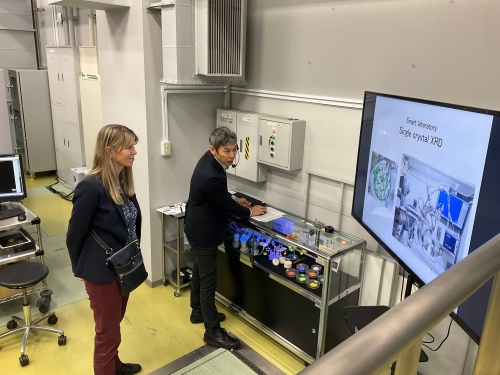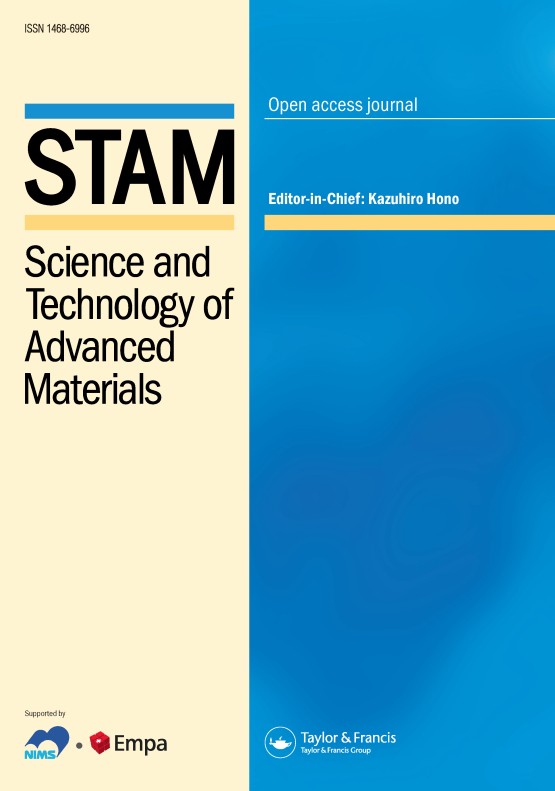Meet the Editor:
Professor Tanja Zimmermann
In commemoration of International Women’s Day, we reached out to our female Editors in STEM for an interview on their experience as a woman in the field. In this edition of our “Meet the Editor” series, we speak to Professor Tanja Zimmermann, Advisory Member of Science and Technology of Advanced Materials (STAM).
Prof Zimmermann started as a research scientist in 1994 and was recently elected as the new Director of Empa. Renowned internationally as a materials scientist, she is the first woman to be taking over the management of Empa’s materials research – a precedent in the institute’s 140-year history.
Can you introduce yourself, give us a brief description about who you are, and where you are based in the world.
Since June 2022, I am the director of Empa, a Swiss federal research institute focusing on materials science and technology. We have a little over 1000 employees working on new materials and technologies enabling a sustainable future.
My personal focus lies on topics such as materials or novel concepts for a circular economy and increasing resource efficiency as well as strategies to achieve our NetZero goals, at least by 2050 if not earlier. We just kick-started a new interdisciplinary and rather broad research initiative, Mining the Atmosphere, which combines a lot of these goals and visions. We want to capture CO2 from the atmosphere and, rather than simply “burying” it in the ground or under the sea, use it to produce valuable materials – and thus bind atmospheric CO2 permanently.
So, this initiative is all-in-one, if you wish: circular, resource-efficient and Net or even Below Zero. Unfortunately, with my role I have hardly any time to spend in a lab anymore, but it is just as gratifying to spark or enable interdisciplinary, cooperative research initiatives such as Mining the Atmosphere that tackle the grand challenges of our times.
Could you share how you came to be on the Advisory Board of STAM, and what your role entails?
We cooperate with the National Institute for Materials Science (NIMS) of Japan to publish this journal. While my role is a more political one, Empa has associated editors that help select the best articles together with the other editors.


Why should researchers submit to STAM?
STAM is an international, interdisciplinary journal for the very best material science. The journal has a strong position (top 20%) among materials science journals, and, consequently, competition to publish in STAM is very high.
STAM is a Gold Open Access journal, and publishing open access is now requested mandatory by many funding agencies. Compared to many other open access journals, article processing charges are moderate, and until end of March 2025, NIMS and Empa are currently supporting a 100% APC discount for all authors.
The focus of STAM is on Materials Science, but in a rather broad setting. First, this includes research on the chemistry or physics of materials, as well as the synthesis, characterization or properties of functional or structural materials. But it also covers materials research from several different fields, including materials for informatics and genomics, materials for energy and environment, or materials for printing and manufacturing.
This aspect is different from many related journals that are focused on one specific subject (energy, photonics, wood, concrete etc). I think this differentiation is (or can be) a driver for publishing in STAM. For example, if you like to report rather interdisciplinary research results that are interesting for a broad readership, not focused on just one subject (“look over the garden fence with your science”).
A further reason to publish in STAM is that it is possible to publish “unusual” manuscripts. For example, one of the Empa editors once handled a manuscript that was 100 A4-pages long and which was published in STAM. It is very hard or even impossible to submit a manuscript of that length to many other journals.
Your work on wood has helped to make it a more respected and versatile material. Can you discuss some of the challenges you faced in this research, and how you overcame them?
When I took over the wood research at Empa, there were people who thought that everything had already been researched on this material. We had to convince them otherwise and be creative. At the time, we focused on the functionalization of wood and cellulose-based materials and were thus able to expand the range of applications. This is also demonstrated in the Unit “Vision Wood” on Empa’s Technology Transfer Platform NEST.
In collaboration with ETH and industrial partners, an example we developed was wood materials that are flame-retardant, antimicrobial or water-repellent. With my own cellulose research, we have developed countless composites, 3D printed materials, oil-absorbing or CO2-adsorbing sponges and a lot more together with industry. It was a great challenge at the beginning to put together a new team with complementary backgrounds. In addition to wood experts, we suddenly needed co-workers with different expertise such as physicists, chemists, material scientists, biologists and engineers.
Sustainability is a growing concern. How does your research at Empa align with the broader goals of sustainable development, and what role do you see materials science playing in addressing environmental challenges?
In our vision, we quite boldly claim that Empa develops materials and technologies for a sustainable future. We have organized and bundled our research efforts in four focus areas that are broadly oriented at the UN’s Sustainable Development Goals (SDG). Materials are at the core of about 70% of all the innovations, according to a recent EU survey. But for many high-tech components and infrastructure – computers, batteries, etc., we still rely heavily on mining, with all its negative “side effects” for both humans and the environment. We strongly believe that we urgently need to close these materials cycles wherever possible. If we do this consistently, materials will have a huge impact on our way to a truly circular economy.
What keeps you passionate and motivated about scientific research, even after years of dedication?
It is very motivating to support and challenge young talents and see how they develop scientifically but also in terms of personality. There are always new challenges and questions in research. Sometimes we must make the seemingly impossible possible. I would be satisfied if we could ultimately make the world a little bit better with our research.
What message of hope and encouragement would you share with the next generation of women aspiring to become leaders in STEM?
It is important to build up a good network. I was lucky to have had good mentors who also encouraged me when it was difficult to juggle family and work. There are always opportunities in life. You should seize them. Perseverance is very important. Do not become discouraged by setbacks or when things do not move along as fast as you want.

About the Journal
Science and Technology of Advanced Materials (STAM) is a leading open access, international journal for outstanding research articles across all aspects of materials science. Our audience is the international community across the disciplines of materials science, physics, chemistry, biology as well as engineering.
The journal covers a broad spectrum of topics including functional and structural materials, synthesis and processing, theoretical analyses, characterization and properties of materials. Emphasis is placed on the interdisciplinary nature of materials science and issues at the forefront of the field, such as energy and environmental issues, as well as medical and bioengineering applications.
